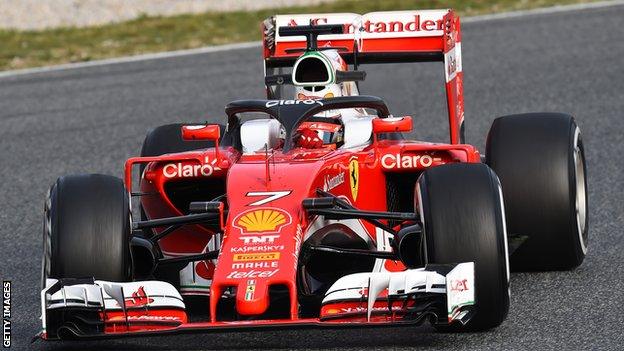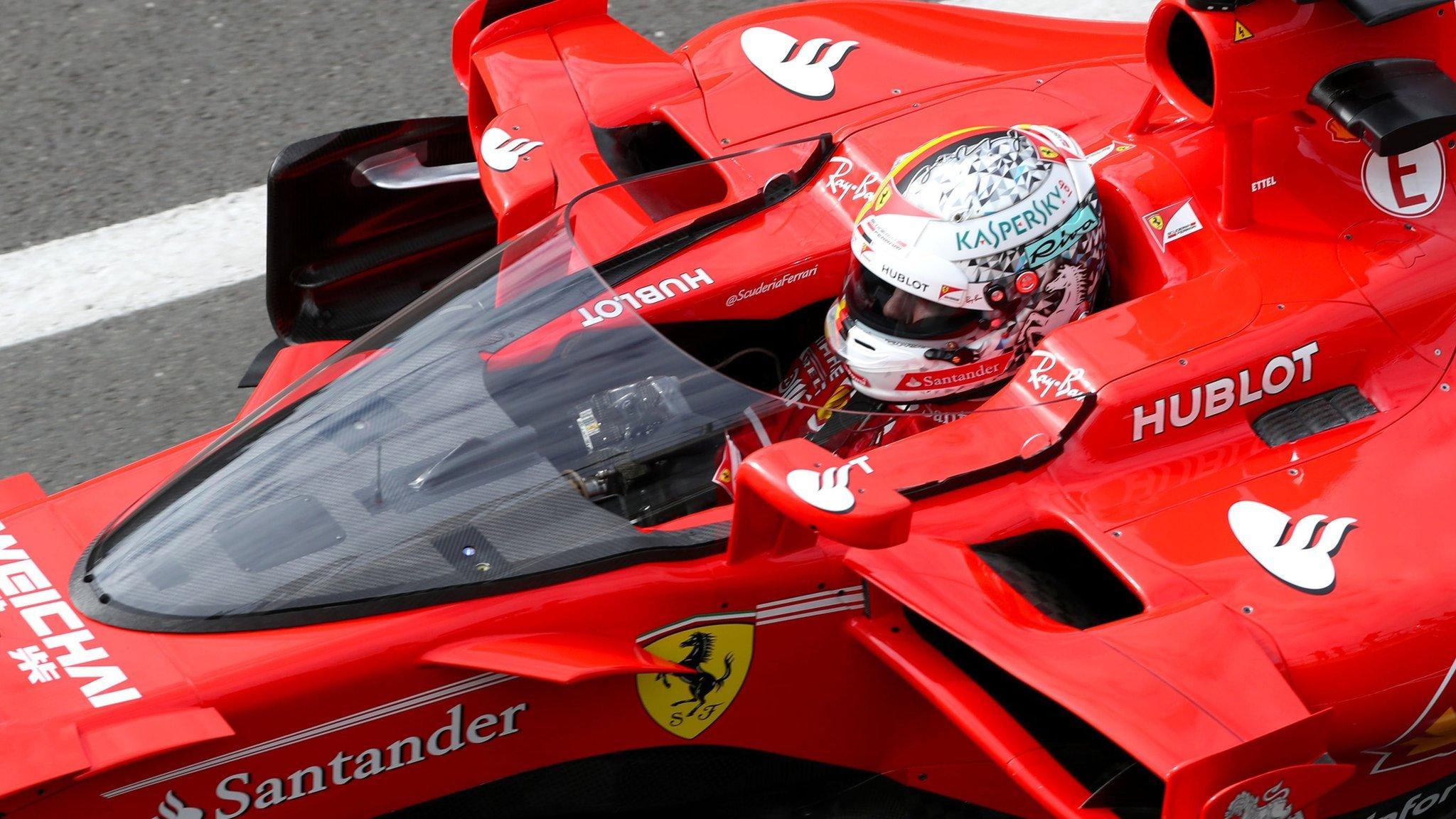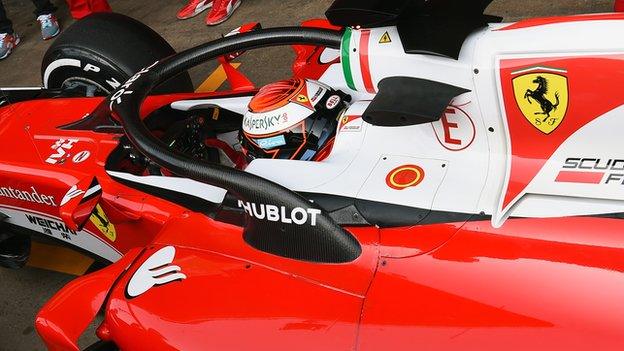Halo: Formula 1 to introduce controversial cockpit head-protection system in 2018
- Published
- comments

Kimi Raikkonen used the 'halo' at the final pre-season test in Barcelona in March 2016
The controversial 'halo' cockpit head-protection system will be introduced into Formula 1 in 2018, governing body the FIA has confirmed.
It said the halo "presents the best overall safety performance" after the evaluation of "a large number of devices over the past five years".
The move comes less than a week after a transparent cockpit 'shield' proved unusable at the British Grand Prix.
Ferrari's Sebastian Vettel said the device made him dizzy after one lap.
The 'shield' had been prioritised by F1's bosses because of mixed reactions to the 'halo' after extensive testing last year.
The 'halo' was found to be the only device that both successfully passed the test of deflecting a wheel fired at it at 150mph and provided a largely unobstructed view.
Some drivers have expressed concerns about the 'halo', a wishbone-shaped device that sits on top of the cockpit and meets in a point in front of the driver, both on aesthetic and philosophical grounds.
But, as a collective body, they are in favour of additional head protection.
Alexander Wurz, chairman of the Grand Prix Drivers' Association, said: "We drivers respect the FIA's stand on safety and support its ongoing quest to make racing safer.
"Over recent decades, we have seen increasing speeds and every faster lap times and this ultimate racing quest is solely possible due to increasing safety.
"Equally, over the same period of time, we have seen an increase in popularity of our sport.
"F1 is a role model for ever-increasing safety without jeopardising performance. While the halo solution might not be the most aesthetically pleasing for everyone, we drivers will nevertheless race and push as hard as we can on track, which is the key for F1 to continue its growth and popularity."
A statement from the FIA said: "With the support of the teams, certain features of [halo's] design will be further enhanced."
The strategy group of leading teams, commercial rights holders and the FIA committed in July 2016 to the introduction of additional frontal protection to F1 in 2018, a decision which delayed by a year its originally intended debut.
Last April, the sport's bosses decided to prioritise the 'shield' with the idea of introducing it for 2018.
But the test at Silverstone proved the device needed a lot more work.
With time running out and teams needing to start work on finalising their 2018 car designs, the rule-making strategy group on Wednesday decided to push forward with the only device that does work.
The strategy group also agreed to set up a working group to examine the problem of cost control in F1, its aim to "come up with innovative solutions aimed at ensuring the sport remains sustainable".
A statement said the group debated "a number of sporting measures aimed at improving the show". It did not reveal what they were but said "specific studies will be carried out to assess" them.
- Published14 July 2017

- Published3 March 2016
